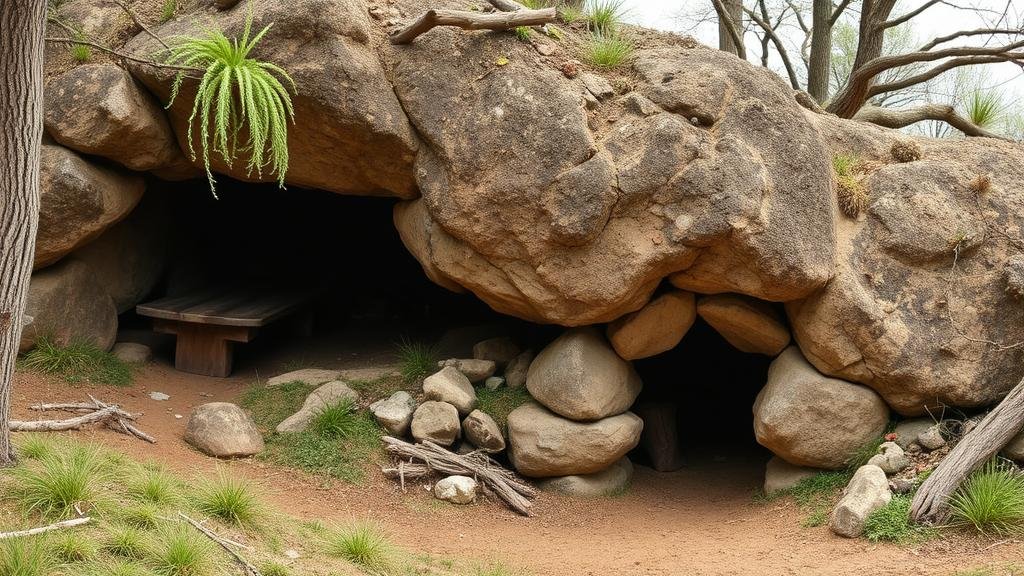Exploring Natural Shelters Used by Early Native American Tribes
Exploring Natural Shelters Used by Early Native American Tribes
The interaction between early Native American tribes and their environment defined their way of life, influencing everything from societal structure to spiritual beliefs. One of the most critical aspects of this relationship was the use of natural shelters. These structures not only provided protection from the elements but also demonstrated ingenuity and a profound understanding of the local ecosystem.
The Importance of Natural Shelters
Natural shelters served various purposes, including protection from weather, predators, and even enemy tribes. Early Native Americans utilized their surroundings to create shelters that were both functional and harmonious with nature. These shelters were not just fleeting resting spots; they were integral to the tribes survival and cultural identity.
- Caves: Caves offered natural protection against the elements. For example, the Pueblo peoples used natural rock formations and caverns not only as shelters but also as sites for cultural rituals.
- Overhangs: These natural features provided instant refuge. Tribes in the Pacific Northwest often built their homes under large rock overhangs, which shielded them from rain and cold winds.
- Trees: Some tribes, like the Iroquois, crafted tree platforms or utilized the hollowed sections of large trees to create living spaces. This resourcefulness allowed them to remain connected to the earth while using what nature provided.
- Brush Shelters: Constructed from leaves, reeds, and branches, brush shelters could be quickly built and dismantled, making them ideal for nomadic tribes. The Plains tribes often relied on this type of shelter during seasonal migrations.
Regional Variations in Shelter Design
Different climatic conditions led to distinct architectural styles and materials across various regions:
- Northwest Coast: Tribes such as the Kwakiutl used large cedar planks to create longhouses, which accommodated extended families and showcased intricate totem pole carvings that represented their lineage.
- The Great Plains: The Lakota and Cheyenne constructed tepees, circular dwellings made from buffalo hides stretched over a frame of wooden poles. This design not only allowed for efficient heating but also facilitated transport, as the tepee could be easily disassembled.
- The Southwest: The Pueblo peoples built adobe homes that were often multi-storied, integrating natural clay and straw, which provided insulation against extreme temperatures.
- The Northeast: Tribes like the Algonquin constructed wigwams using a frame of bent saplings covered with bark or animal skins, allowing for a dome-shaped structure that was lightweight and sturdy.
The Cultural Significance of Natural Shelters
Natural shelters served as more than mere structures; they were spaces of communal living and cultural practices. For many tribes, the layout and design of their shelters reflected their social organization and spiritual beliefs.
For example, the communal longhouses of the Iroquois not only accommodated multiple families but also served as a place for gatherings and deliberations, showcasing democratic principles integral to their governance system. The structure itself, elongated and central to village life, symbolized unity and collective strength.
Modern Applications and Lessons Learned
Understanding the effectiveness of natural shelters provides valuable lessons for contemporary society, particularly in the areas of sustainable design and ecological architecture. Today, architects and builders are re-evaluating traditional methods in light of environmental concerns. The use of local materials, natural ventilation, and low-impact construction methods can all trace their origins back to indigenous practices of shelter building.
Urban planners and environmentalists can also benefit from studying these natural shelters. For example, the concept of biophilic design–an architectural approach that seeks to connect people with their natural environment–echoes the philosophies of early Native American tribes who built in harmony with nature.
Concluding Thoughts
The exploration of natural shelters used by early Native American tribes reveals a deep connection between these communities and their environments. By analyzing their ingenuity and versatility in shelter design, modern society can gain insights into sustainable living and environmental consciousness, all while appreciating the rich cultural heritage of Native American tribes.
Ultimately, the legacies of these ancient structures extend beyond survival; they remind us of the importance of balance with nature that is increasingly relevant in today’s world.



